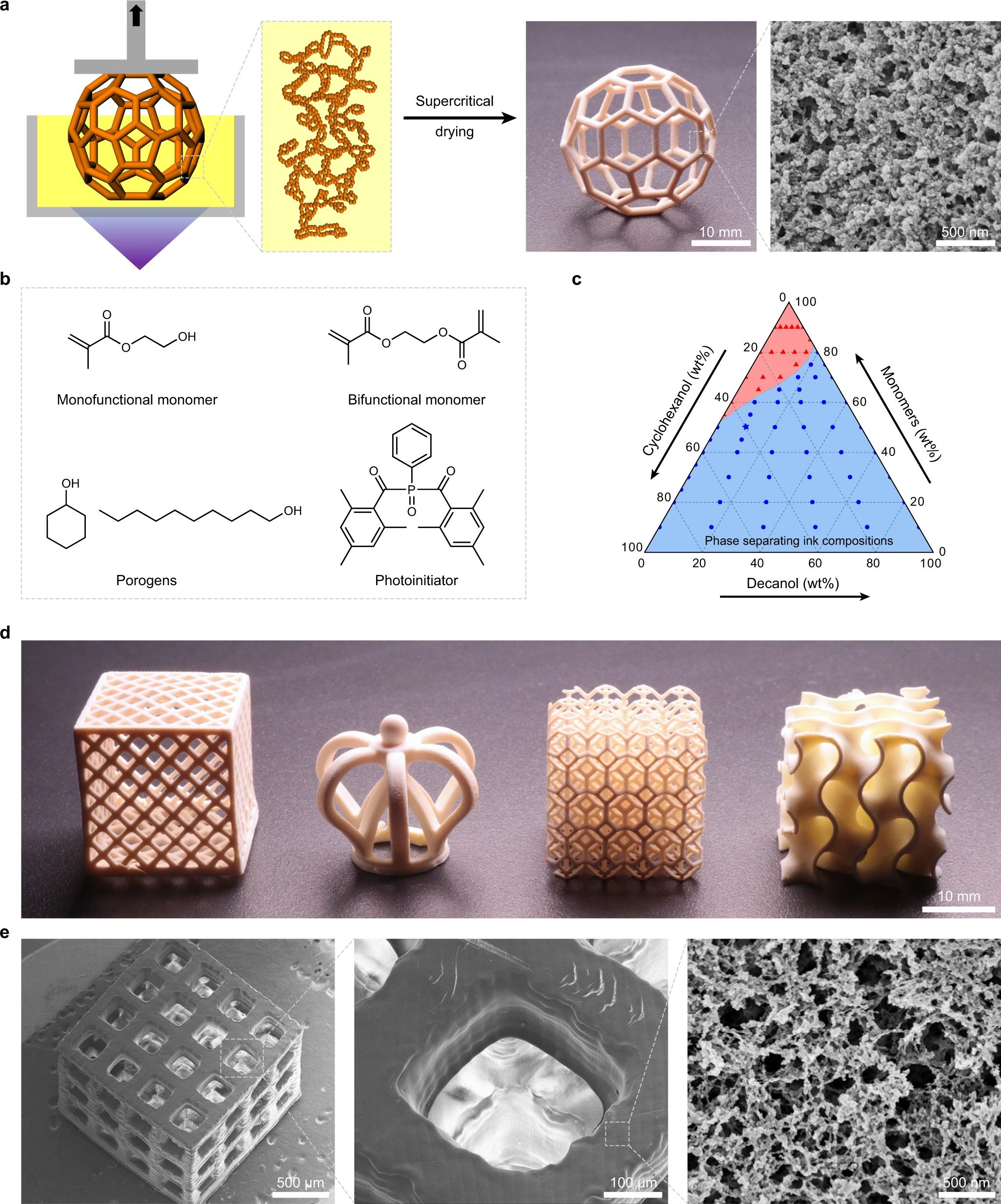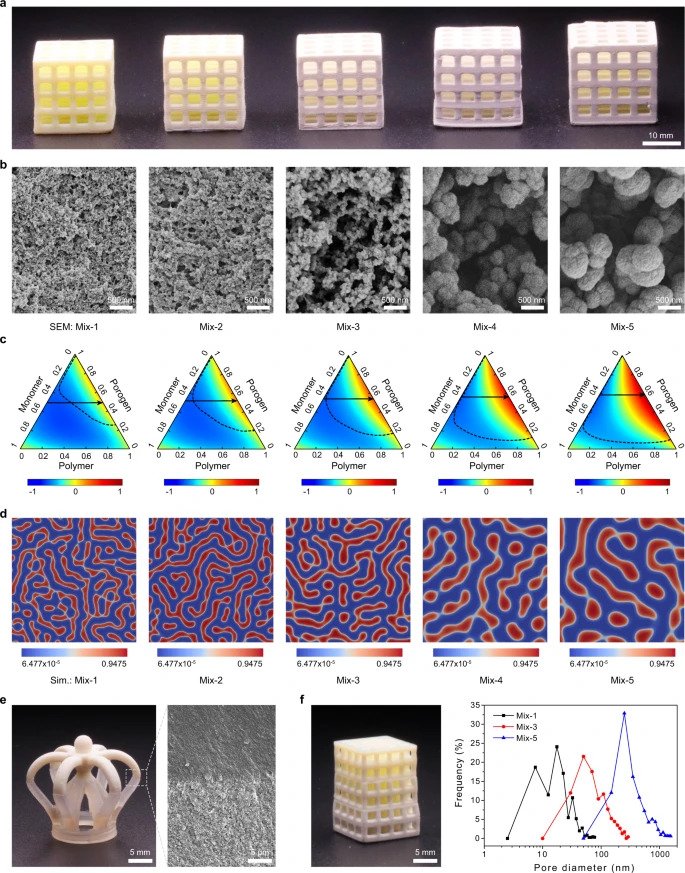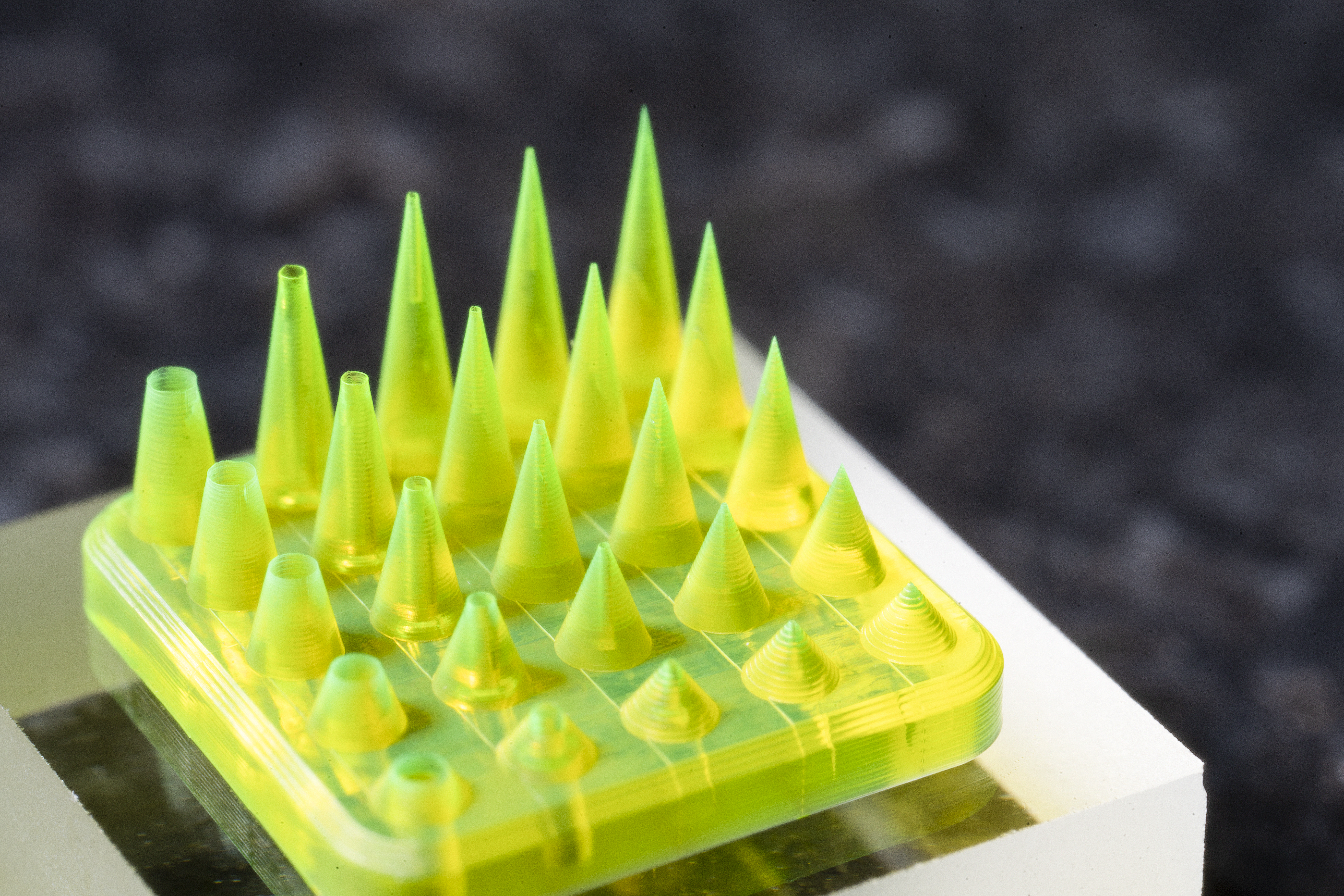Researchers from the Karlsruhe Institute of Technology (KIT) have developed a method that enables the 3D printing of nanoporous polymers with complex geometries that have broad uses within energy storage, tissue engineering, and biomedical applications.
Combining Digital Light Processing (DLP) and polymerization-induced phase separation (PIPS) technologies, the scientists 3D printed complex-shaped polymer structures ranging in size from 100 μm to several centimeters with controlled nanoporosity. Controlling the structures’ nanoporous properties enabled them to optimize the printed objects’ adsorption, catalysis, and separation capabilities.
According to the researchers, current 3D printing methods aren’t practically suitable for fabricating large polymer structures with complex geometrical features at the sub-micrometer scale, as a result of trade-offs between the printing voxel, build volume, and printing time.
Through their newly developed method, the researchers were able to overcome these limitations to produce polymers with improved adsorption performance, in addition to increased cell adhesion and growth on the polymer’s surface.

Printing nanoporous objects
The scientists deployed DLP, a 3D printing method that uses projected light patterns to achieve localized polymerization in a vat of ink, to create their nanoporous structures. The nanoporosity was achieved by introducing porogens to the inks used during the DLP process, via PIPS.
Using a desktop DLP printer, the scientists fabricated four objects displaying different geometrical properties, including a hexagonal mesh box, an intricate crown, a lattice cube, and a gyroid, in order to demonstrate the capability of their method to produce nanoporous objects with highly complex geometries that are difficult to achieve by extrusion or molding techniques.
The researchers were able to control the pore size of the polymers by adjusting process parameters such as ink composition or irradiation density. During their study, they were able to create 3D structures with spatially controlled pore sizes ranging in size from 10 nm to 1,000 μm.
The study results also suggest that through exploiting the design flexibility of DLP, the method could potentially be used for the 3D printing of extremely lightweight materials.

The benefits of nanoporosity
The 3D printing sector could potentially benefit a great deal from being able to print objects that possess sub-micrometer porous structures. These structures share similarities with biological interfaces, such as permeability and a large surface area, which are important properties for applications within gas storage, water treatment, liquid chromatography, and biomedical engineering.
However, some limitations to the method remain, such as having to compromise between porosity and mechanical strength of the 3D printed objects, in addition to the need for supercritical drying to maintain the structural integrity and surface porosity of the objects. The porogens also need to be removed from the polymerized material post-printing.
Further details of the study can be found in the paper titled “3D printing of inherently nanoporous polymers via polymerization-induced phase separation”, in the Nature journal. It is co-authored by Z. Dong, H. Cui, H. Zhang, F. Wang, X. Zhan, F. Mayer, B. Nestler, M. Wegener, and P. Levkin.

3D printing at the nanoscale
KIT has carried out previous research into 3D printing polymer microstructures with nanoscale porosities, having developed a novel photoresist printing ink for two-photon lithography last year. It is believed the material could have major implications for the manufacturing of micro-optics, metamaterials, and micro-scaffolds for bioprinting experiments.
Elsewhere, Vienna-based polymerization specialist UpNano unveiled a two-photon technology that utilized a high-power laser to enable small part fabrication down to the micrometer, and nano-scale 3D printing specialist Nanoscribe joined the three-year MiLiQuant project seeking to initialize quantum technology at industry level to further develop quantum sensors and imaging devices.
Other research institutions have also embarked upon projects aiming to develop low-cost methods of 3D printing nanoscale structures and experimenting with new techniques of printing nanoscale soft materials, as well as nanoscale metal 3D printed structures.
Subscribe to the 3D Printing Industry newsletter for the latest news in additive manufacturing. You can also stay connected by following us on Twitter and liking us on Facebook.
Be sure to subscribe to the Another Dimension podcast on your chosen podcast player to make sure you never miss an episode.
Looking for a career in additive manufacturing? Visit 3D Printing Jobs for a selection of roles in the industry.
Featured image shows 3D Printing of polymer objects with complex macroscopic 3D geometry and defined nanoporous structure. Image via KIT/Nature journal.



